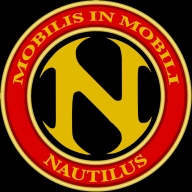
The main character in the novel is the one that says nothing, yet it lives and breathes like the living organisms that it contains; The Nautilus.
Verne named the Nautilus after Robert Fulton’s real-life submarine Nautilus from 1800. Before penning Twenty Thousand Leagues Under The Seas, Jules Verne studied a model of the newly developed French Navy submarine “Plongeur” at the 1867 Exposition Universelle, which inspired him to design his own Nautilus.
Designed and commanded by Captain Nemo, the vessel is powered by electricity provided by sodium/mercury batteries (with sodium extracted from seawater) that power the main engine and the other services aboard, such as lighting and equipment.
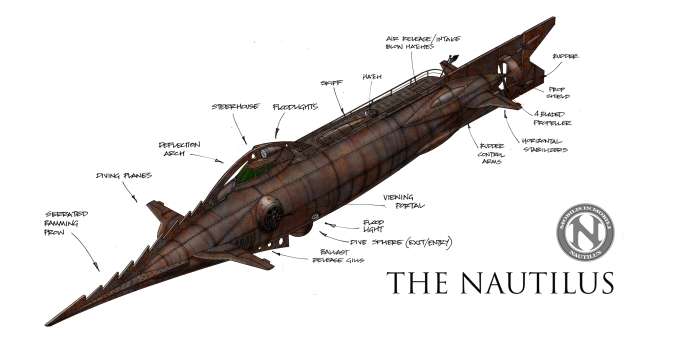
The Nautilus is double-hulled, and is further separated into water-tight compartments. Top speed 50 knots. Its displacement is 1,356.48 French freight tons emerged (1,507 submerged) or 50,000 cubic feet.
Constructed on a remote desert island by Nemo and his faithful team, parts were built to order in France, the United Kingdom, Prussia, Sweden, the United States, and elsewhere. Demo brought all the parts separately to the island, then had them assembled to complete the final vessel.
Nemo describes the Nautilus as follows:
“ Here, M. Aronnax, are the several dimensions of the boat you are in. It is an elongated cylinder with conical ends. It is very like a cigar in shape, a shape already adopted in London in several constructions of the same sort. The length of this cylinder, from stem to stern, is exactly 70 m, and its maximum breadth is eight metres. It is not built on a ratio of ten to one like your long-voyage steamers, but its lines are sufficiently long, and its curves prolonged enough, to allow the water to slide off easily, and oppose no obstacle to its passage. These two dimensions enable you to obtain by a simple calculation the surface and cubic contents of the Nautilus. Its area measures 1011.45 square metres; and its contents 1,500.2 cubic metres; that is to say, when completely immersed it displaces 1500.2 cubic metres of water, or 1500.2 metric tons. ”
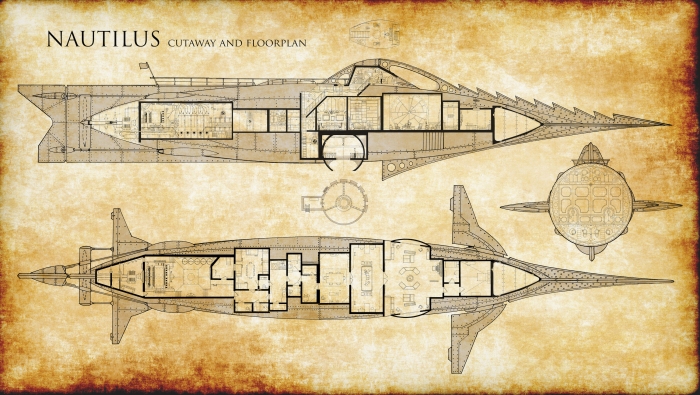
The Nautilus uses floodable tanks in order to adjust buoyancy and so control its depth. The pumps that evacuate these tanks of water are so powerful that they produce large jets of water when the vessel emerges rapidly from the surface of the water. This leads many early observers of the Nautilus to believe that the vessel is some species of whale, or perhaps a sea monster not yet known to science. To submerge deeply in a short time, Nautilus uses a technique called “hydroplaning”, in which the vessel dives down at a steep angle.

The Nautilus supports a crew that gathers and farms food from the sea. The Nautilus includes a galley for preparing these foods, which includes a machine that makes drinking water from seawater through distillation. The Nautilus is not able to refresh its air supply, so Captain Nemo designed to do it by surfacing and exchanging stale air for fresh, much like a whale. The Nautilus is capable of extended voyages without refuelling or otherwise restocking supplies. Its maximum dive time is around five days.
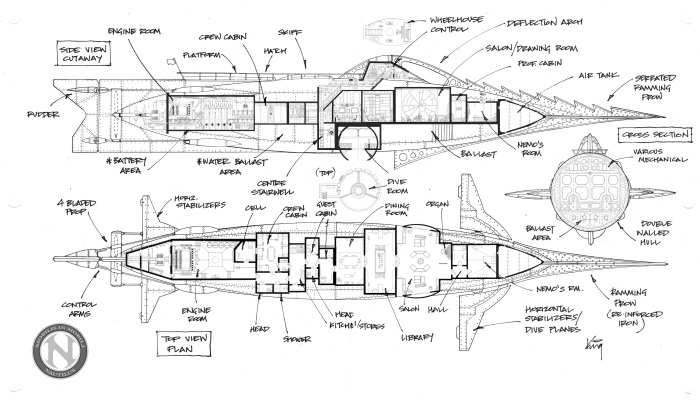
Much of the ship is decorated to standards of luxury that are unequalled in a seagoing vessel of the time. These include a library with boxed collections of valuable oceanic specimens that are unknown to science at the time, expensive paintings, and several collections of jewels. The Nautilus also features a lavish dining room and even an organ that Captain Nemo uses to entertain himself in the evening. By comparison, Nemo’s personal quarters are very sparsely furnished, but do feature duplicates of the bridge instruments, so that the captain can keep track of the vessel without being present on the bridge. These amenities however, are only available to Nemo, Professor Aronnax, and his companions.
From her attacks on ships, using a ramming prow to puncture target vessels below the waterline, the world thinks it a sea monster, but later identifies it as an underwater vessel capable of great destructive power, after the Abraham Lincoln is attacked and Ned Land strikes the metallic surface of the Nautilus with his harpoon.
SOURCE: Wikipedia.
THE DESIGN
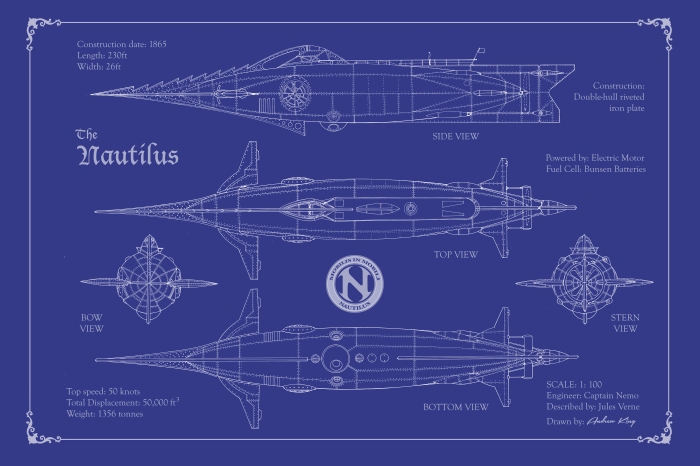
Since the original novel was released in 1870, there have been hundreds of design interpretations of the Nautilus over the years, all unique and wonderful in their own imaginative way. So how could something new be designed that did not overly resemble a previous design? I thought the best way to tackle such a task was to reach back to the original description Jules Verne gave for the Nautilus. A consumate detail freak and with a vast knowledge of the engineering of the time, Verne described the Nautilus in such exacting detail that it was easy to take his notes and translate them into a set of engineering blueprints for a version of the Nautilus.

With the goal of making the most accurate interpretation of the original Nautilus as possible based on Verne’s detailed description, I transcribed every measurement and detail as best as I could, then added some new elements that I think would make this a formidable craft worthy of sailing the seven seas with Captain Nemo in command.

As with all strong vehicle designs, the vessel had to have a very distinguished silhouette, combining the look of Victorian era engineering, a “coolness factor”, and of course the element of menacing presence. It is a deadly ship designed to sink ships after all. That is why I incorporated a serrated ramming prow, to slice and tear its way through the target ship’s hull with ease and maximum sinking power.
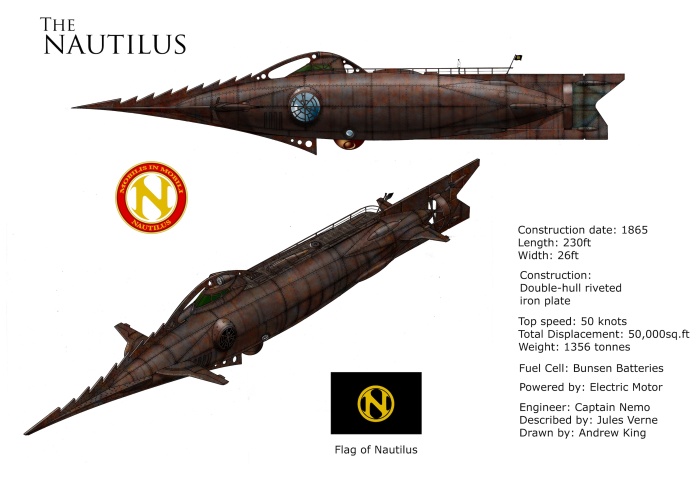
Using a giant squid, a hammerhead shark and a swordfish as inspirational design cues for this version of the Nautilus, I put it all into the design blender and penned something that I think matches Verne’s description, and hopefully makes a good main character for the many adventures its crew encounters in the novel.
Andrew King c.2017
